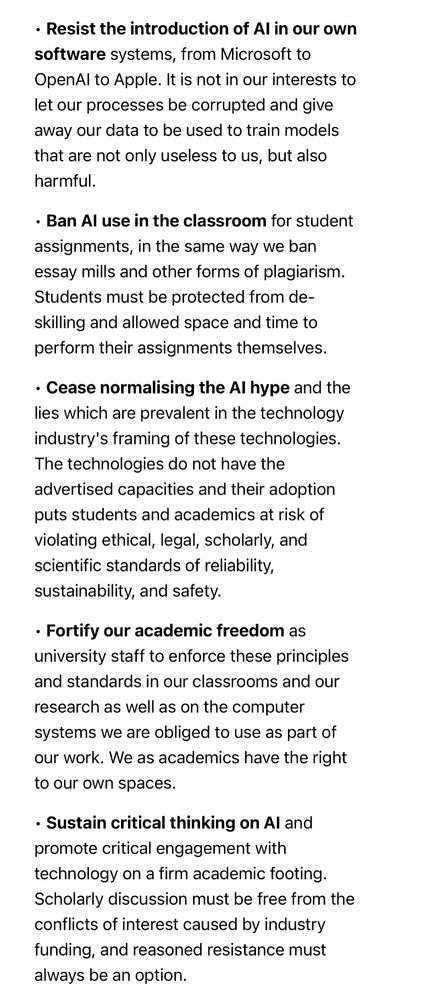
openletter.earth/open-letter-...

openletter.earth/open-letter-...
automation increases productivity. feel free to go back to the era before factories if you like. this is just another step along that progression. is the current approach/hype incorrect? yes. can they still be useful in specific cases? also yes. let’s be practical.
automation increases productivity. feel free to go back to the era before factories if you like. this is just another step along that progression. is the current approach/hype incorrect? yes. can they still be useful in specific cases? also yes. let’s be practical.
1) formatting/rephrasing text
2) idea generation
let me know if you want more elaboration. they’re pretty specific use cases & not useful without oversight, but can greatly speed up an existing workflow.
1) formatting/rephrasing text
2) idea generation
let me know if you want more elaboration. they’re pretty specific use cases & not useful without oversight, but can greatly speed up an existing workflow.


